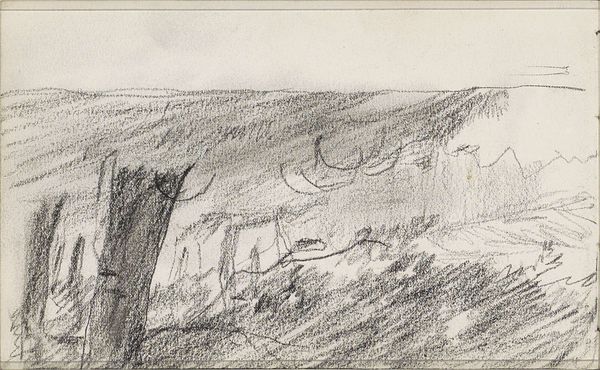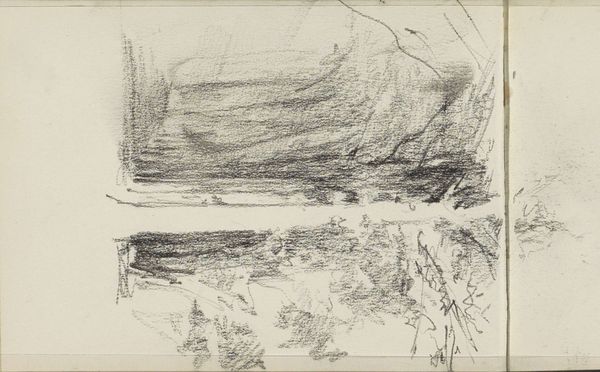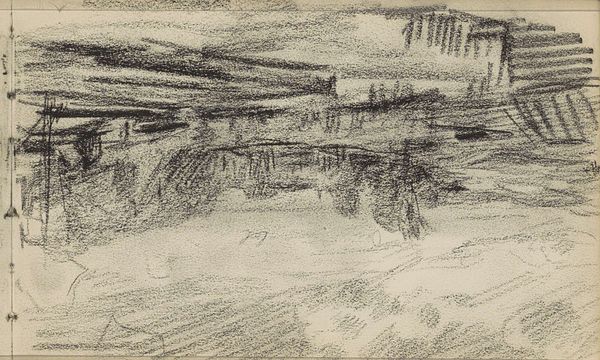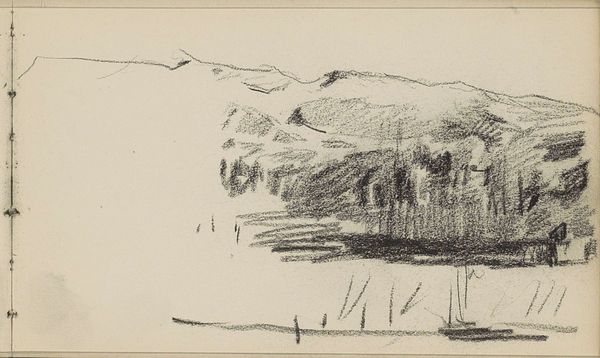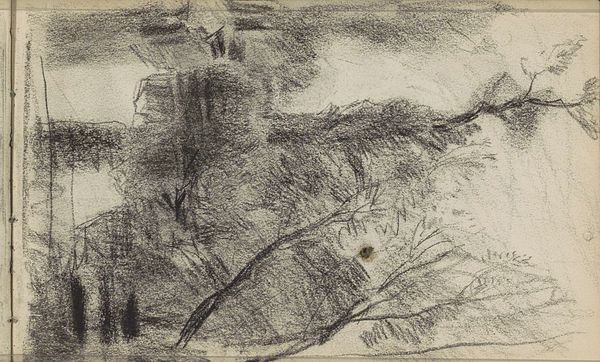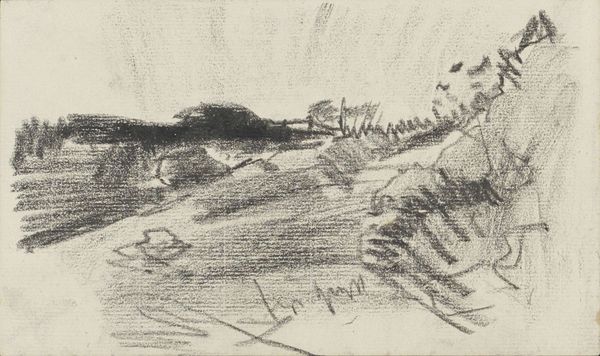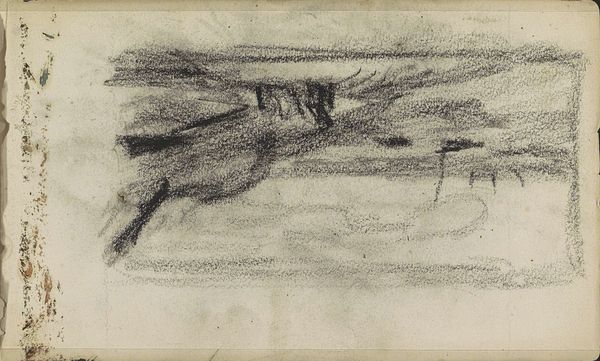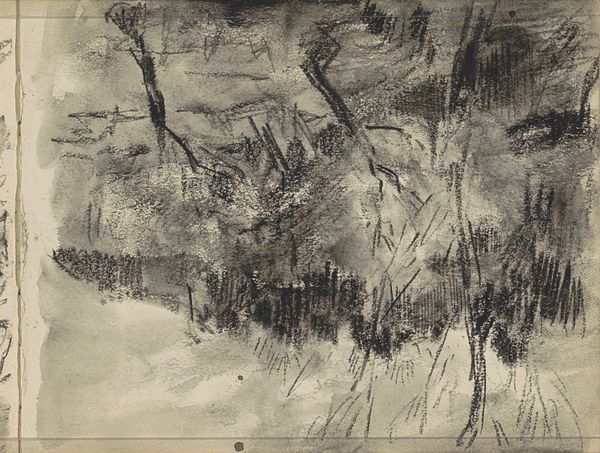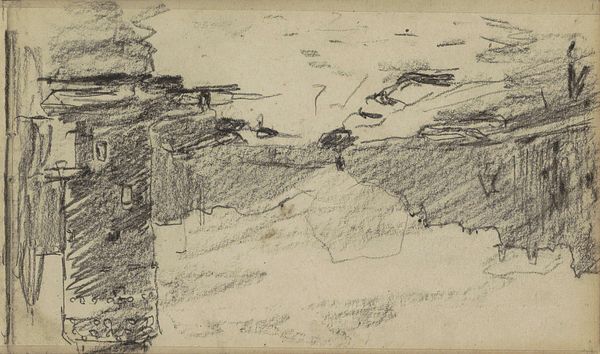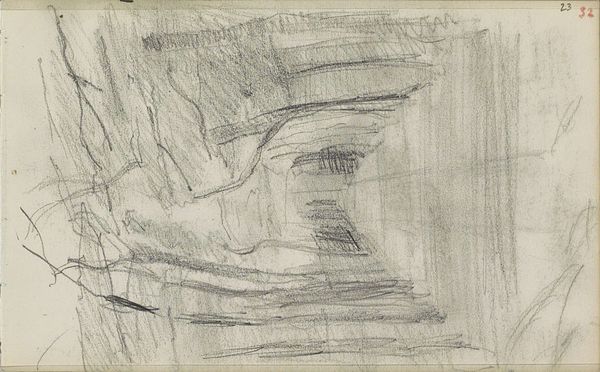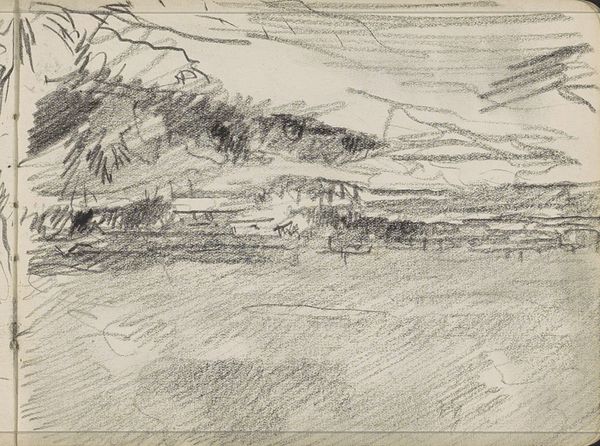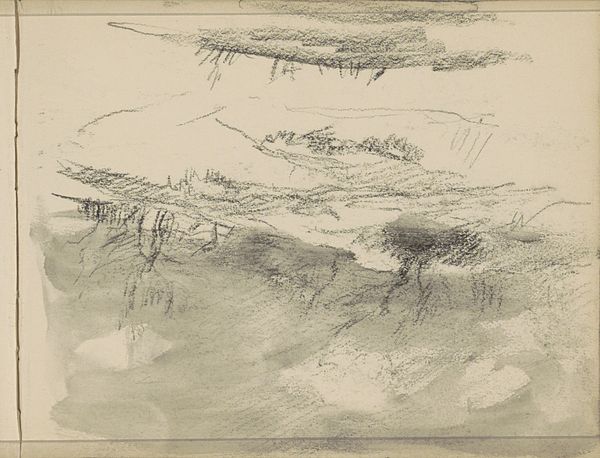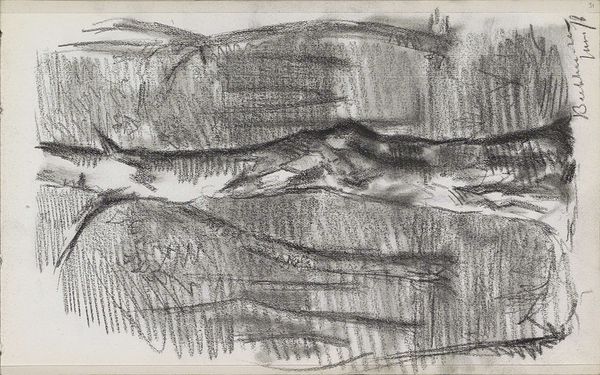
Copyright: Rijks Museum: Open Domain
Curator: Well, this is "Landschap" by Johan Antonie de Jonge. It was created sometime between 1881 and 1927 using pencil on paper. Editor: Immediately, I am struck by the ephemeral quality of this drawing. It seems like a memory, fading at the edges, the landscape obscured by a veil. There is a strong sense of melancholy present. Curator: Indeed. De Jonge's choice of a quick sketch reflects a deliberate engagement with Impressionism. The pencil, as a readily available medium, speaks volumes about artistic labor and its democratization at the time. Think about the increased availability of art supplies during the late 19th and early 20th centuries. Editor: I am also seeing more than just materiality. This "Landschap," in its understated presentation, challenges the grand narratives of idealized landscapes typically consumed by the Dutch Bourgeoisie. The bleakness raises questions. Where is this place? Who has access to it? It prompts reflections on land ownership, environmental impact, and the labor intertwined with our access to, and understanding of nature. Curator: Right, but looking closely at the textures, the hatching and cross-hatching techniques employed by De Jonge suggests a methodical, almost meditative process, contrasting with the rugged realities and colonial context of landscapes at this time. How much labor went into this piece itself? The material investigation exposes both beauty and something unsettling. Editor: Agreed. Moreover, landscape as a genre in this period cannot be separated from the broader social and political currents, particularly colonialism. Whose land is being depicted, and how does this artistic representation perpetuate or challenge the status quo of territorial and social exploitation? Curator: This leads us to examining De Jonge's influences. Understanding his engagement with the art world, the social circles he moved in, allows us to consider whether "Landschap" should be viewed as a critique or a reflection of existing social norms. Editor: So by acknowledging that this landscape does not exist in a vacuum, that every stroke and every medium choice is a product of social and material forces, we gain not just an appreciation for the technical skill on display but a deeper consciousness of power, access, and representation. Curator: Yes, examining “Landschap" in this manner makes you consider the commodification of art and the social circumstances necessary for this type of art to exist at all. Editor: For me, considering art in a vacuum without discussing power is how structures of inequity continue to exist! Curator: Fascinating, simply fascinating.
Comments
No comments
Be the first to comment and join the conversation on the ultimate creative platform.
